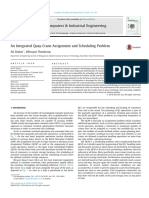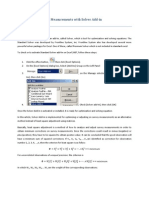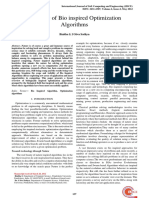0% found this document useful (0 votes)
29 views4 pagesSearch Strategies, Algorithms, and Techniques in AI
The document provides an overview of search strategies in AI, categorizing them into uninformed and informed searches. It details various techniques such as Breadth-First Search, Depth-First Search, and A* Search, highlighting their completeness, optimality, and complexities. Additionally, it discusses applications of these techniques in areas like game playing, robot navigation, and route finding.
Uploaded by
Ezhilmathi ManinathanCopyright
© © All Rights Reserved
We take content rights seriously. If you suspect this is your content, claim it here.
Available Formats
Download as DOCX, PDF, TXT or read online on Scribd
0% found this document useful (0 votes)
29 views4 pagesSearch Strategies, Algorithms, and Techniques in AI
The document provides an overview of search strategies in AI, categorizing them into uninformed and informed searches. It details various techniques such as Breadth-First Search, Depth-First Search, and A* Search, highlighting their completeness, optimality, and complexities. Additionally, it discusses applications of these techniques in areas like game playing, robot navigation, and route finding.
Uploaded by
Ezhilmathi ManinathanCopyright
© © All Rights Reserved
We take content rights seriously. If you suspect this is your content, claim it here.
Available Formats
Download as DOCX, PDF, TXT or read online on Scribd
/ 4























































































